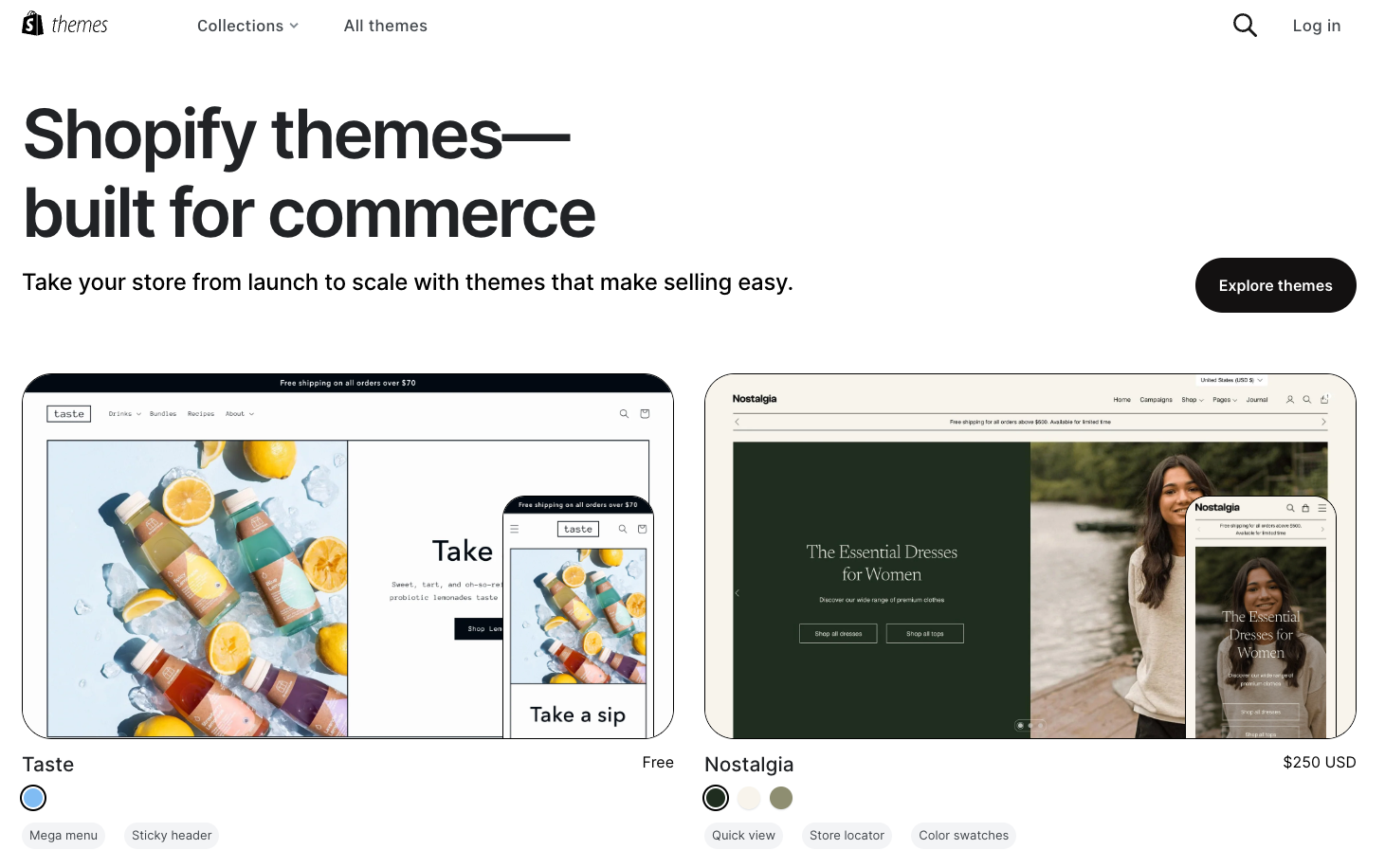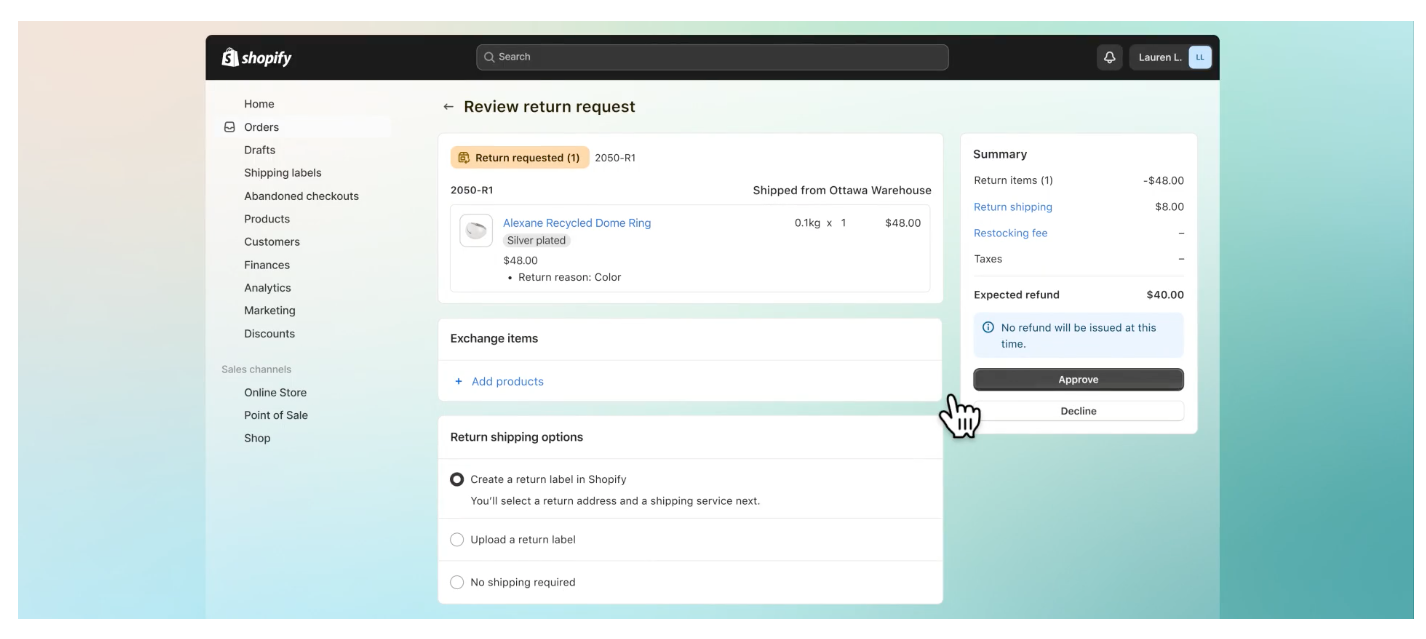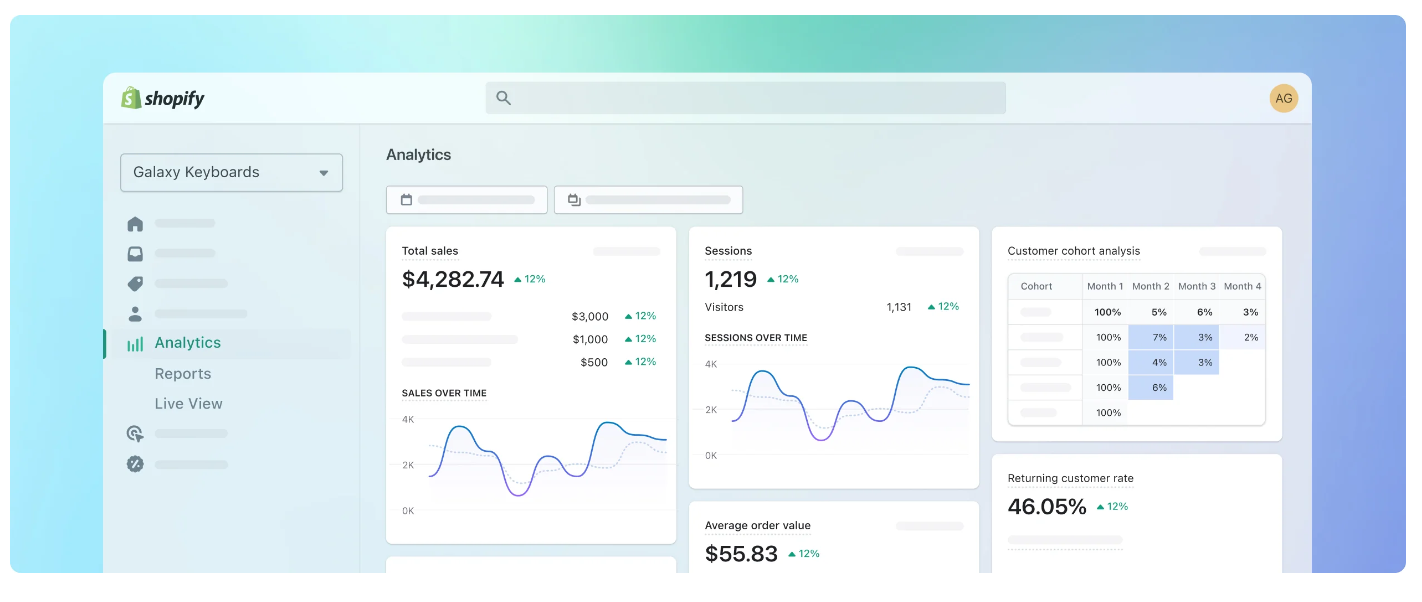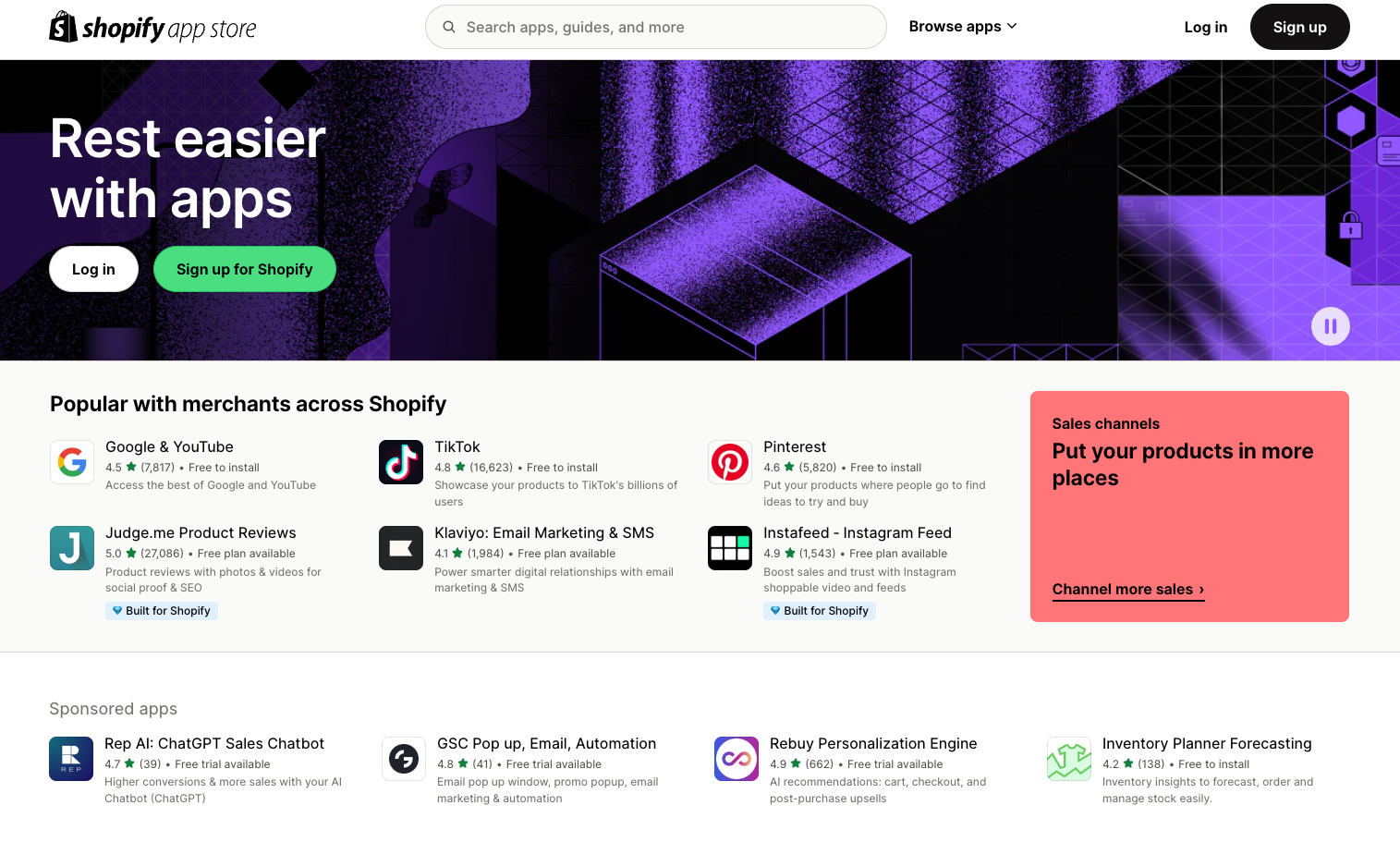Shopify 101: What Online Sellers Need to Know for eCommerce Success

Whether you’re just starting out in eCommerce or steering a successful online store, chances are you’ve heard of Shopify. But maybe you’re unfamiliar with the platform's ins and outs or how it works. If you’ve ever wondered, “What’s the deal with Shopify,” this guide’s for you.
Founded in 2006, Shopify has grown rapidly and become one of the leading eCommerce platforms globally. Today, Shopify powers over two million businesses in 175 countries, processing over $235 billion in sales from 675 million customers last year alone. As the biggest eCommerce name in the US, Shopify’s steady growth and continuous innovation have solidified its position as a go-to solution in the $6.3 trillion eCommerce market.
This guide has all the must-know info about Shopify for those curious about eCommerce, gearing up to launch their online store, or eyeing a platform switch.
What you need to know about Shopify and how it works
What is Shopify?
Shopify is the go-to eCommerce platform for creating and managing online stores. It seamlessly combines website building, hosting, and payment processing, offering an all-in-one solution for businesses of all sizes and stages.
Whether you're just starting your store or looking to expand, Shopify provides customizable templates, user-friendly tools, and built-in marketing features.
From budding entrepreneurs to seasoned merchants, Shopify simplifies setting up and running an online store, allowing users to focus on growth with its intuitive interface and powerful features.
How does Shopify work?
Shopify simplifies setting up your online store with its intuitive drag-and-drop functionality. You can customize your website without needing coding expertise.
Shopify seamlessly integrates with various payment gateways, shipping providers, and third-party apps, making it easier to manage your eCommerce operations.
With Shopify’s robust analytics and reporting tools, sellers can easily track sales, monitor website traffic, and glean valuable insights into customer behavior—all of which help you make data-driven decisions to optimize your store’s performance and grow your business.

What is Shopify Magic?
Shopify Magic brings the power of artificial intelligence (AI) to eCommerce, which transforms how businesses operate online.
With AI-driven personalization, Shopify Magic crafts unique shopping experiences, recommends products tailored to individual preferences, and optimizes marketing efforts to engage customers and drive sales.
By automating tedious tasks like inventory management and order processing, Shopify's AI streamlines operations, freeing up time for merchants to focus on growth.
Exciting features like predictive search and chatbots add a layer of user delight, making shopping effortless and support easily accessible.

How to start your online store with Shopify
How to set up a Shopify store
Establishing your online presence starts with setting up your store. Here are four starter steps to help you get your Shopify store up and running:
- Choose your domain name wisely. Pick a domain name that reflects your brand identity. Ensure it’s SEO-friendly and easy for customers to remember, and snag a “.com” domain if it’s available since that’s what most shoppers will organically type into their search engines. You can register a new domain directly through Shopify or connect an existing one.
- Set up your site’s hosting. Shopify provides secure hosting for your online store, ensuring fast loading times and reliable performance.
- Configure your store settings. Customize your store settings to match your business needs. Set your preferred currency, language, tax rates, payment gateways, and shipping preferences to provide a seamless shopping experience for your customers.
- Add products, collections, and categories. Populate your store with inventory by adding products, organizing them into collections, and categorizing them for easy navigation.
Customization and design
Personalizing your store's appearance is essential for creating a memorable brand experience.
- Explore Shopify's theme store. Browse through various professionally designed themes and choose one that aligns with your brand aesthetic.
- Customize your store’s layout and design. Tailor your store's layout, colors, fonts, and imagery to create a cohesive brand identity. Use Shopify's intuitive customization tools to make adjustments quickly.
- Add custom pages and navigation elements. Enhance the user experience by creating custom pages, menus, and navigation elements that seamlessly guide customers through your store.

Inventory management
Efficient inventory management is crucial for ensuring smooth operations and avoiding stockouts.
- Set up product variants and SKUs. Create product variants to offer different options to your customers, and assign unique SKUs to each product for easy tracking.
- Manage stock and restocking alerts. Track your inventory levels and set up restocking alerts to replenish stock when it runs low.
- Use bulk editing tools and CSV import/export. Streamline inventory management by making bulk edits to product information and importing/exporting data via CSV files.

Order processing and shipping
Streamlining order fulfillment and shipping processes is essential for a seamless buying experience.
- Configure your shipping settings. Set up shipping zones, rates, and carrier integration within Shopify to offer accurate shipping options to your customers.
- Process orders efficiently. Manage orders, print packing slips, and create shipping labels directly from Shopify to expedite order fulfillment.
- Automate order fulfillment. Use dropshipping, third-party logistics (3PL), or fulfillment services to automate order processing and streamline shipping.

Optimize your store for SEO
Improving your store's visibility on search engines is essential for driving organic traffic and attracting potential customers.
- Research keywords. Identify relevant search terms for your products using keyword research tools to target your audience effectively.
- Optimize your product content. Write descriptive product titles, detailed descriptions, and alt text for images to improve visibility on search engines and enhance accessibility.
- Use Shopify's SEO settings. Optimize your store's search engine rankings using Shopify's built-in SEO features, including meta tags, URL redirects, and canonical URLs.
Enhance the post-purchase experience
After customers purchase, it's crucial to provide ongoing support and engagement to ensure their satisfaction and loyalty.
- Provide customers with order tracking information. Ensure customers can easily track their orders and receive delivery updates to enhance their post-purchase experience.
- Offer ongoing support. Implement a customer support system to address any post-purchase inquiries, return requests, or concerns promptly and professionally.
- Encourage customer engagement. Use follow-up emails, post-purchase surveys, and loyalty programs to foster ongoing engagement and loyalty.

Learn how AfterShip Tracking’s proactive shipment tracking delights your customers, reduces WISMO tickets, and optimizes delivery performance.
How to use Shopify to engage customers and drive sales
Boost conversions with compelling on-site content
Your store's content is crucial in driving conversions and enticing customers to purchase. Here are some tips to optimize your content:
- Write compelling product descriptions. Highlight your products' unique features and benefits in descriptive, engaging language that resonates with your target audience.
- Add high-quality images and videos. Showcase your products from multiple angles and provide clear visuals that allow customers to visualize themselves using your product.
- Display customer reviews and testimonials. Feature authentic reviews and testimonials from satisfied customers to build trust and social proof. This tactic helps alleviate any doubts potential buyers may have and encourages them to make a purchase.
Implement effective marketing strategies
Effective marketing strategies are essential for reaching and engaging potential customers and increasing online sales. Here's how you can promote your store:
- Run targeted email and SMS campaigns. Segment your audience and send personalized email and SMS campaigns to engage customers and encourage them to purchase. Use tools like Klaviyo to automate and optimize your email and SMS marketing efforts.
- Run social media ads and retargeting campaigns. Reach potential customers on platforms like TikTok by running targeted social media ads and retargeting campaigns. This tactic allows you to reconnect with visitors who have previously interacted with your store but haven’t purchased yet.
- Offer discounts, promotions, and loyalty programs to incentivize purchases. These can help increase customer loyalty and encourage repeat purchases.
Create a great customer experience
An exceptional customer experience is critical for building customer loyalty and driving sales. Here are some tips to offer outstanding customer service:
- Offer multiple ways to contact customer support. Customers should be able to reach out for support via live chat, email, and phone to get assistance when needed quickly.
- Personalize the shopping experience. Use data-driven insights to personalize the shopping experience for each customer. Offer tailored product recommendations and special offers based on their browsing and purchasing history.
- Resolve issues promptly and professionally. Address customer inquiries and problems promptly and professionally to ensure their satisfaction. Use tools like Gorgias to streamline customer support and provide efficient resolutions.

Retention and loyalty programs
Implementing customer retention and loyalty programs can encourage repeat purchases and create long-lasting customer relationships. Here's how you can create effective loyalty programs:
- Use points-based programs. Reward customers for their purchases and engagement. Offer points for every dollar spent and referral made, and allow customers to redeem them for discounts or exclusive perks. Use tools like Yotpo to create compelling customer loyalty and referral programs.
- Offer exclusive perks and benefits. To make loyal customers feel valued and appreciated, offer exclusive perks and benefits, such as early access to sales or events.
- Analyze customer data. Use customer data to identify opportunities for personalized offers and targeted marketing campaigns. Analyze purchase history, browsing behavior, and demographics to tailor your approach to each customer.
By implementing these strategies, you can effectively engage customers, drive sales, and build longer-lasting relationships with your audience.
How to manage your finances and analytics with Shopify
Understand Shopify Payments
Setting up secure payment options and managing transactions within Shopify is essential for running a successful online store. Here’s how you can optimize your payment process with Shopify Payments:
- Configure Shopify Payments: Set up secure payment options to accept credit card payments securely.
- Integrate your payment provider: Connect your chosen provider with your Shopify store for seamless transactions.
- Manage transactions: Easily manage payouts, refunds, and chargebacks directly within the Shopify admin interface.
- Analyze financial performance: Use Shopify's built-in analytics tools to track revenue, expenses, and profitability to make more informed business decisions.
Streamlining your payment process with Shopify ensures a seamless checkout experience for your customers, ultimately driving growth for your online business.
Track performance metrics
Understanding your business's health and identifying areas for improvement is vital. With Shopify's analytics dashboard, you can:
- Monitor real-time metrics: Easily track sales, conversion rates, and average order values (AOV).
- Track trends: Monitor specific metrics or trends over time with custom reports and dashboards.
- Analyze customer behavior: Dive into customer behavior data like traffic sources, browsing patterns, and cart abandonment rates to optimize your store for growth and enhance the shopping experience.
By effectively tracking performance metrics, you can make data-driven decisions to drive growth and success for your online store.

Financial reporting
Creating financial reports allows you to gain deeper insights into your business's financial performance and make informed, growth-driving decisions.
Shopify provides tools to generate standard reports, including profit and loss (P&L) statements, balance sheets, and cash flow statements, giving you a comprehensive view of your financial health.
You can also customize financial reports to track the specific metrics or business segments relevant to your operations.
By identifying areas for improvement and allocating resources effectively, you can drive profitability and fuel sustainable growth for your online store.
How to use Shopify apps and integrations to expand your reach
Explore third-party apps
The Shopify ecosystem offers many third-party apps and integrations designed to extend platform functionality and enhance various aspects of business operations.
Whether you're looking for tools to enhance your email marketing campaigns, streamline inventory management, or improve customer service, the Shopify App Store has different categories of apps and integrations to meet your specific business needs.
To pick the best Shopify apps for your business, evaluate their:
- Features
- Pricing plans
- User reviews
With careful assessment, you can identify apps that align with your goals and contribute to your online store’s growth and success.

Integrate with external platforms
Connecting Shopify with external tools and platforms is essential for streamlining your business operations and expanding your reach to new audiences.
By integrating Shopify with popular eCommerce platforms, marketplaces, and social media channels, you can reach a broader customer base and drive sales across multiple channels.
You can streamline workflows and improve operational efficiency by syncing data between Shopify and external systems, such as:
- Accounting software
- CRM platforms
- Email marketing tools
- Product feed management software like AfterShip Feed
API integrations allow you to build custom connections and automate data syncs between Shopify and other systems, further enhancing productivity and scalability.

Learn how AfterShip Feed helps merchants protect revenue and make order fulfillment on TikTok Shop hassle-free.
Trends and innovations
Staying ahead in eCommerce means staying attuned to trends and technological advancements and embracing innovation. Here are some trends that are reshaping customer expectations:
- Augmented reality (AR): Explore immersive shopping experiences like virtual try-ons to meet evolving customer preferences.
- Voice commerce: To cater to tech-savvy consumers, look for advancements in voice-activated shopping (e.g., Amazon’s Alexa, Google Assistant).
- Social commerce: Use social media and commerce platforms like TikTok and TikTok Shop to drive sales and engage with your audience directly.
Advancements in technology are also transforming how merchants manage eCommerce operations. Keep an eye on developments in:
- Artificial Intelligence (AI): Harness AI for personalized recommendations and efficient operations.
- Machine learning: Use machine learning algorithms (a branch of AI) to optimize processes and enhance customer experiences.
- Blockchain: Explore the potential of blockchain for secure transactions and transparent supply chains.
- Internet of Things (IoT): Embrace IoT devices for inventory management and customer engagement.
Understanding and adapting to these changes helps sellers stay ahead of the curve and drive sustainable growth.
How to scale your online business with Shopify Plus
What is Shopify Plus?
Shopify Plus is Shopify's enterprise-level solution for high-volume merchants looking to scale their businesses.
If you’re looking for an eCommerce platform that aligns with your "grow as I grow" philosophy, explore Shopify Plus, which adapts to your business's evolving needs and provides the flexibility and support you need for continued growth as you scale.
As a Shopify Plus merchant, you can access various benefits, including:
- Dedicated support
- Customizable solutions
- Advanced features to fuel your success
Many successful brands, such as Allbirds, Bombas, and Heinz, have used Shopify Plus to scale their businesses and achieve significant growth, making it a trusted choice for ambitious merchants.
Key features of Shopify Plus
Shopify Plus offers advanced features designed to meet the unique needs of growing businesses, including:
- Checkout Extensibility. With Shopify Plus, merchants can customize and enhance their checkout experience through third-party apps like AfterShip Personalization or custom development. This flexibility allows merchants to create a tailored checkout process that aligns with their brand and provides a seamless buying experience for customers.

- Customizable checkout experiences. Shopify Plus merchants have access to customizable checkout experiences, allowing them to optimize the checkout process and improve conversion rates. By tailoring the checkout flow to their specific needs, merchants can reduce friction and drive more sales.
- Advanced reporting tools. Shopify Plus provides advanced reporting tools that offer deeper insights into your business performance. These tools allow you to track key metrics, analyze trends, and make data-driven decisions to drive growth and profitability.
- Advanced security features. Security is a top priority for Shopify Plus, which offers advanced security features and compliance certifications to protect sensitive customer data. With Shopify Plus, you can rest assured that your customer's information is always secure and protected.
- Customizable automation workflows. Shopify Plus merchants can create customizable automation workflows to streamline business operations and drive efficiency. By automating repetitive tasks and workflows, merchants can free up time and resources to focus on strategic initiatives that drive growth.
With its advanced features and customizable solutions, Shopify Plus provides high-volume merchants with the tools and support they need to scale their businesses successfully.
Whether you're looking to optimize your checkout process, gain deeper insights into your business performance, or streamline operations, Shopify Plus offers the flexibility and scalability to support your growth objectives.
Shopify-related FAQs
Looking for more information? Here are answers to some frequently asked Shopify-related questions.
Why would someone use Shopify?
Shopify offers an all-in-one platform for building and managing online stores. It makes it easy to sell products online with customizable templates, secure payment processing, and robust marketing tools.
Is Shopify like Amazon?
While both are eCommerce platforms, Shopify is a tool for creating and managing your online store, while Amazon is a marketplace where you can sell products alongside competitors.
Is Shopify worth it for a small business?
Absolutely. Shopify provides scalable solutions suitable for businesses of all sizes. Its user-friendly interface, customizable features, and affordable pricing plans make it an ideal choice for small businesses looking to establish an online presence.
Can individuals sell on Shopify?
Individuals can use Shopify to set up and run their online stores. Whether you're a solo entrepreneur, artist, or craftsman, Shopify provides the tools and resources to start selling your products online.
Do any large companies use Shopify?
Many large companies and well-known celebrity brands use Shopify's platform to power their online stores, including Red Bull, Sephora, Skims, Steve Madden, Kylie Cosmetics, Taylor Swift, Lady Gaga, and Drake. Shopify's scalability, reliability, and flexibility make it an attractive option for businesses of all sizes—from startups to established brands.
Create your online empire with Shopify
Whether launching your first online store or expanding a thriving business, Shopify offers a versatile eCommerce platform suitable for stores of all sizes and stages.
With customizable themes, robust analytics, and seamless integrations, Shopify helps merchants create and optimize their online presence, connect with customers, and scale operations effectively.
From intuitive website-building tools to advanced solutions like Shopify Plus tailored for high-volume merchants, Shopify offers the flexibility, scalability, and support essential for starting and growing your online business.
Elevate your eCommerce game with expert tips, data-backed insights, and inspiration from the best in the business—all delivered right to your inbox.

